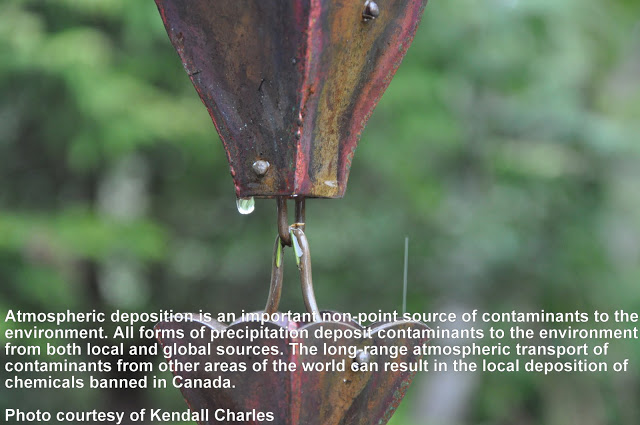There are numerous sources of contaminants to the Georgia Basin. Some industrial facilities and wastewater treatment plants release large volumes of continuous effluent discharge to the environment via effluent outfall pipes. These are known as “point sources” of pollution, as the point of discharge to the environment is easily identifiable. However, there are also a multitude of “non-point sources” of contaminants entry to the environment which are smaller and less well-defined. Important non-point sources include atmospheric deposition and runoff in both urban and agricultural regions. Many point and non-point sources of contaminants to the Georgia Basin contain complex mixtures of chemicals, including several whose potential environmental concerns in the Georgia Basin have not yet been determined.

The primary point sources of contaminants to the Georgia Basin are the large industrial facilities (such as pulp and paper mills) and municipal wastewater treatment plants. The numerous non-point sources include stormwater and urban runoff, agricultural runoff, combined sewer overflows (CSOs), boating activity, poorly maintained on-site sewage systems (primarily septic systems), atmospheric deposition, aquaculture facilities, leaks and spills, and contaminated sites.
While releases from non-point sources are typically small when considered on an individual basis, the cumulative impacts of the very large number of these small sources within a watershed can result in substantial loadings of contaminants to the environment and can result in areas of significant environmental degradation. Some watersheds within the Georgia Basin currently show signs of contaminant stress from non-point sources and more information is needed on the contribution of non-point sources to the overall loadings of contaminants to the Georgia Basin (BC MOE 1999; Garrett 2010).
Because point sources of pollution are readily identified, contaminants loadings and environment impacts associated with these sources are more easily monitored than are those associated with non-point sources. For this reason, it is also easier to control point sources of pollution through regulatory measures and to assess the efficacy of pollution control initiatives. Increased regulatory actions, combined with an increased awareness and implementation of voluntary controls by industry, have significantly decreased the release of contaminants to the Georgia Basin from major point sources over the last two decades. And, as a result, the environmental quality in the vicinity of many of these sources has improved considerably. While concerns associated with point source releases of contaminants have not been eliminated, substantial progress has been made. However, non-point sources, which remain largely unregulated, are now recognized as the main source of many potentially harmful contaminants to the Georgia Basin environment (BC MOE 1999; Garrett 2010).
In addition to releases to the aquatic environment, some sources (such as pulp mills, the lumber and wood products industry and agriculture) also release contaminants to the atmosphere and so contribute to the degradation of air quality. In many cases, contaminants remain in the atmosphere for short periods of time and are deposited to the soil or water nearby via precipitation or dry deposition. However, long-range atmospheric transport causes the global redistribution of contaminants via atmospheric currents. As a result, contaminants whose use is banned in Canada can still be deposited in the Georgia Basin by atmospheric currents originating from areas of the world where these contaminants are still in use. It is important to better understand the loadings of contaminants from all local sources in relation to global sources, such as long-range atmospheric transport.
Link to References for this Section
More information on sources of contaminants:
